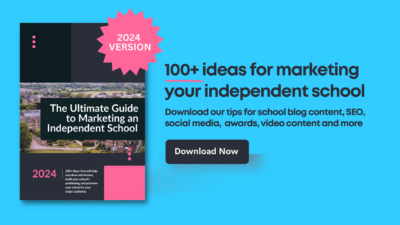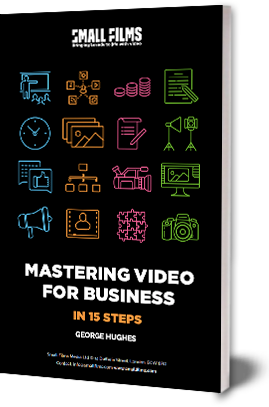Independent schools today are operating in a highly competitive environment. From student recruitment to brand building, bursary fundraising and alumni engagement — video content has become one of the most effective ways to connect with your audience and tell your school’s story.
But not all video content is equal. To make an impact, your school needs a smart, strategic mix of video formats — each serving a distinct purpose, each crafted to resonate with its intended audience.
So what are the essential types of video content every independent school should be creating?
1. The Flagship Film
Think of this as your school’s cinematic calling card — a bold, emotive, high-impact film that captures the heart and soul of what makes your school different. It’s your hero content. Often used on your homepage, in open day presentations, or as part of admissions campaigns.
This film isn’t about listing facilities — it’s about expressing your ethos, spirit, and ambition in a way that moves people.
🎬 Example
Watch our flagship film for Shiplake College — a powerful blend of purpose-led storytelling and stunning visuals that captures this unique school’s essence …
📖 Related reading
What to include in a promotional video?
2. Admissions & Recruitment Videos
With prospective families doing much of their research online, your admissions video needs to answer one core question: why this school?
These films often speak directly to parents and students, combining logistics (boarding/day options, age ranges, location) with emotional reassurance and values alignment.
We often recommend a short, punchy overview edit plus a series of modular assets to be used in paid social or on admissions landing pages.
🎬 Example
Here’s an example of an admissions video our team created for Eton College
📖 Related reading
Maximising Admissions: Content Strategies for Independent Schools
3. Departmental and Subject-Focused Videos
These shorter videos spotlight what happens inside your classrooms. Whether it’s STEM, drama, art, or sport — these subject films allow you to go deeper and showcase the richness of your curriculum.
They can be used on specific pages of your website, in newsletters to prospective parents, or in department-level communications.
🎬 Example:
In our work for Marlborough College, we created a set of videos highlighting the school’s academic strengths and co-curricular opportunities.
4. Sixth Form or Senior School Campaigns
These targeted videos help students (and parents) understand the transition into the next phase of their education — and why your school is the right place to stay or join at 16+. They focus on maturity, opportunity, preparation for life after school, and often speak in a more direct tone to older students.
🎬 Example
Watch how we positioned Wellington College Sixth Form to appeal to both students and parents through confidence, independence and belonging.
5. Boarding Life Films
For boarding schools, it’s essential to demystify the experience for parents (particularly overseas) and help children imagine themselves in a new environment. A well-crafted boarding video can reassure, excite, and give a true sense of life beyond the classroom.
These often include interviews with boarders, housemasters/mistresses, and show the rhythm of day-to-day life.
🎬 Example
6. Alumni and Fundraising Stories
From bursary campaigns to capital projects, video plays a powerful role in development. Films that feature real stories of impact — past pupils whose lives were changed, or current students benefitting from philanthropy — can move hearts and open wallets.
🎬 Example:
Our film for Marlborough’s bursary programme helped increase donor engagement by showing what The Marlborough Difference really means in practice.
7. Social-First Video Campaigns
Not everything needs to be polished and cinematic. Your social channels need snackable, shareable content to keep your school top of mind. Think 30–60 second vertical edits, day-in-the-life snippets, reel-style teacher intros, or pupil testimonials designed for Instagram, TikTok or YouTube Shorts.
This content is often produced alongside your main shoot — with social-first versions edited for maximum engagement.
🎬 Example
📖 Related reading:
How to increase applications to your school.
8. TV and Cinema Adverts
For high-profile campaigns (especially in key admissions windows), a polished 30-second TV or cinema spot can drive broad awareness. These are typically bold, distilled messages designed to make a strong impression quickly — often paired with digital or outdoor campaigns.
🎬 Example:
We helped Croydon High School (GDST) develop a 30-second cinema spot to support local admissions — shot with cinema-quality lenses and edited for high-impact screening.
Building Your Video Strategy
The best school video strategies aren’t about creating content in isolation — they’re about mapping a journey.
From your flagship film that sets the tone, to social videos that sustain interest, and targeted departmental or fundraising films that support key moments — the most effective schools we work with think long-term and plan content as part of a wider communications calendar.
At Small Films Education, we help independent schools create the right content for the right audience — with bold ideas, cinematic visuals and deep strategic thinking.
See More of Our Work
Need Help Crafting Your School’s Video Strategy?
We’ve helped dozens of independent schools increase admissions, raise awareness, and connect emotionally with their audiences through film.
📽️ Explore our services
📚 Browse our blog
📕 Read founder George Hughes’s Amazon Bestselling book about video marketing Resonance: Unleash your Brand’s Potential with Video
✉️ Fill out the form on our contact page and start the conversation!






